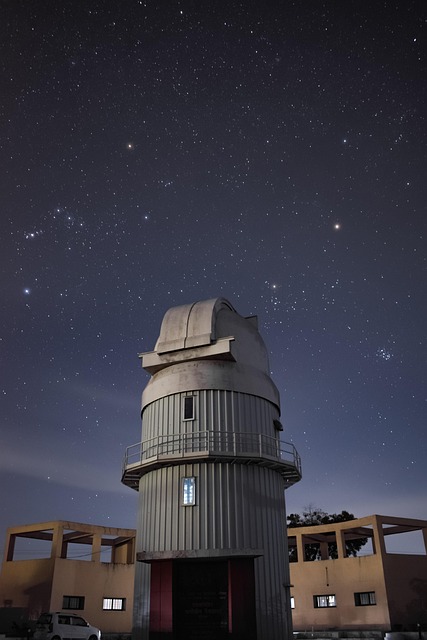Hey there! Ever looked up at the night sky and wondered about the earliest attempts to map those twinkling lights? Well, the quest to pinpoint the Oldest star catalog China has sparked a fascinating historical debate, and that’s exactly what we’re diving into today. We’ll be exploring the intriguing question: Is China’s Shi’s Star Catalog truly the oldest in the world? This isn’t just about dusty old books; it’s about understanding the ingenuity of ancient civilizations and their incredible drive to chart the cosmos.
Table of Contents
So, get ready to journey back in time as we examine the evidence surrounding the Oldest star catalog China. We’ll consider the methodologies used to date these ancient records, and the controversies that have emerged. Furthermore, we’ll look at the significance of these celestial maps within their historical context, and how they connect to modern astronomy. It’s a story of scientific rigor, historical interpretation, and the enduring human quest to understand our place in the universe.
We also Published
Unveiling the Cosmos: Exploring the Antiquity of Ancient Chinese Star Catalogs
For eons, humanity has turned its gaze skyward, seeking solace, knowledge, and a deeper understanding of our place in the vast universe. The celestial tapestry, adorned with twinkling stars, has served as a guide, a calendar, and a source of profound inspiration for civilizations across the globe. Now, a fascinating debate is unfolding within the scientific community, centered around the origins of the earliest star catalogs. The spotlight shines on the Ancient Chinese Star Catalogs, specifically Shi’s Star Catalog, and its potential claim to the title of the world’s oldest. This quest to understand the origins of astronomical observation is not merely an academic exercise; it offers a glimpse into the ingenuity and intellectual prowess of ancient societies, revealing how they charted the heavens and laid the groundwork for modern astronomy. The meticulous process of cataloging stars, a testament to human curiosity, provides invaluable insights into the cultural and scientific advancements of the past.
The researchers at the Chinese Academy of Sciences’ National Astronomical Observatories have put forth compelling evidence suggesting that Shi’s Star Catalog predates all others, placing it centuries ahead of its rivals. This claim, if substantiated, would rewrite the history books, acknowledging the profound contributions of ancient China to the field of astronomy. The methodology employed, which accounts for potential errors inherent in observations made thousands of years ago, is a testament to modern scientific rigor. The use of Earth’s precession, the slow wobble of our planet’s axis, as a dating tool adds another layer of sophistication to the analysis. However, the scientific community is not a monolith, and as with any groundbreaking discovery, scrutiny and debate are essential. The ensuing discussion, fueled by differing interpretations and alternative dating methods, promises to further illuminate the intricacies of this historical puzzle, and to refine our understanding of the cosmos and the civilizations that first sought to comprehend it.
Deciphering Celestial Records: The Methodology Behind Dating Ancient Chinese Star Catalogs
The task of dating Ancient Chinese Star Catalogs, such as Shi’s, is fraught with challenges, primarily due to the passage of time and the inherent limitations of ancient observational techniques. The positions of stars, as recorded in these catalogs, are not static; they change over centuries due to the phenomenon of Earth’s precession. This slow, cyclical wobble of our planet’s axis causes a gradual shift in the apparent positions of stars in the night sky. The researchers employed this principle to date the catalog, using the observed positions of stars to extrapolate backward and determine when the observations were likely made. The application of the Generalized Hough Transform method, a statistical technique designed to accommodate errors in ancient coordinates, is a crucial element of their approach. This method acknowledges that ancient astronomers, working without the benefit of modern instruments, would inevitably have introduced some degree of error in their measurements.
The dating of Shi’s Star Catalog has been a subject of contention, with various dates proposed over the years. The researchers’ analysis, however, suggests an initial drafting around 355 BCE, with an update around 125 CE. This timeline places the catalog well before the Ptolemaic Star Catalog, which is believed to be derived from the Hipparchus Star Catalog of the 2nd century BCE. The Ptolemaic Star Catalog, a cornerstone of Western astronomy for centuries, provides a crucial point of reference in this historical investigation. The researchers’ methodology is not without its critics, however. Some scientists propose alternative dating based on different interpretations of the data, and the possibility of systematic errors in the original observations. These alternative perspectives highlight the complexity of the problem and the need for continued research and analysis. The debate surrounding the dating of the Ancient Chinese Star Catalogs underscores the importance of critical thinking and the constant refinement of scientific understanding.
Controversies and Perspectives: Debating the Age of Ancient Chinese Star Catalogs
The claim that Shi’s Star Catalog is the oldest in the world has not gone unchallenged. Alternative theories and interpretations of the data have fueled a lively debate within the scientific community. One significant point of contention revolves around the possibility of systematic errors in the original observations. Some scientists suggest that the instrument used to record the star positions might have been off by one degree, which could significantly impact the dating of the catalog. Adjusting for this potential error leads to a revised date, potentially placing the catalog’s origins closer to or after 103 BCE. This revised timeline aligns with the Chinese invention of the armillary sphere and their adoption of a spherical cosmological model, both occurring in the first century BCE. This alignment has led some historians to favor the later date, as it suggests a more cohesive development of astronomical knowledge and technology within ancient China.
The debate surrounding the age of the Ancient Chinese Star Catalogs also touches upon broader issues of historical interpretation and the potential for biases in scientific inquiry. Daniel Patrick Morgan, a historian at France’s Center for Research on East Asian Civilizations, has offered a critical perspective, comparing the researchers’ dating to finding a receipt from a gas station and claiming it’s from 1700. This analogy highlights the importance of context and the need for caution when interpreting historical data. Furthermore, it is worth noting that the Western world’s historical approach has sometimes undervalued achievements made elsewhere, including in ancient China. The ancient Babylonian 7th century BCE Astronomical Diaries, which predate both European and Asian astronomical artifacts, provide an important counterpoint. While these diaries contain textual astronomical observations rather than visual ones, they demonstrate the early development of astronomical record-keeping in other parts of the world.
Beyond the Stars: The Significance of Ancient Chinese Star Catalogs in Historical Context
The significance of the Ancient Chinese Star Catalogs extends far beyond the mere determination of their age. These catalogs represent a remarkable achievement in human history, providing invaluable insights into the scientific, cultural, and technological advancements of ancient China. They offer a window into the minds of ancient astronomers, revealing their methods, their motivations, and their understanding of the cosmos. The creation of these catalogs required meticulous observation, sophisticated mathematical calculations, and a deep understanding of celestial mechanics. The fact that these catalogs have survived for millennia is a testament to the skill and dedication of the ancient Chinese astronomers. Moreover, the catalogs provide a crucial link between ancient and modern astronomy. They represent the earliest attempts to systematically map the heavens, laying the groundwork for future astronomical discoveries and advancements.
The study of Ancient Chinese Star Catalogs also sheds light on the broader cultural context in which they were created. In ancient China, astronomy was closely intertwined with other disciplines, such as astrology, cosmology, and calendrical science. The positions of stars were believed to influence events on Earth, and the accurate tracking of celestial movements was essential for predicting the seasons, regulating agricultural practices, and maintaining social order. The development of these catalogs was therefore not merely a scientific endeavor; it was also a cultural and political imperative. The ongoing debate surrounding the dating and interpretation of these catalogs serves as a reminder of the complexity of historical research and the importance of considering multiple perspectives. The quest to understand the origins of these ancient astronomical records is a journey of discovery, revealing not only the achievements of ancient civilizations but also the enduring human fascination with the stars.
We also Published
RESOURCES
- Chinese star catalog is the world’s oldest, astronomers claim …
- The World’s Oldest Star Catalog, Hidden in China for Over Two …
- Is ancient Chinese astronomer Shi Shen’s stellar catalogue the …
- These Scientists Say They’ve Identified the Oldest Known Star Chart …
- Ancient Chinese star chart dated to 2,300 years ago may be the …
- World’s oldest star chart may be 2,300 years old and from China …
- Astronomers claim Chinese star catalog is world’s oldest
- Revisiting the epoch of the earliest Chinese star catalog titled “Shi …
- Star catalogue – Wikipedia
- The World’s Oldest Star Catalog, Hidden in China for Over Two …







0 Comments